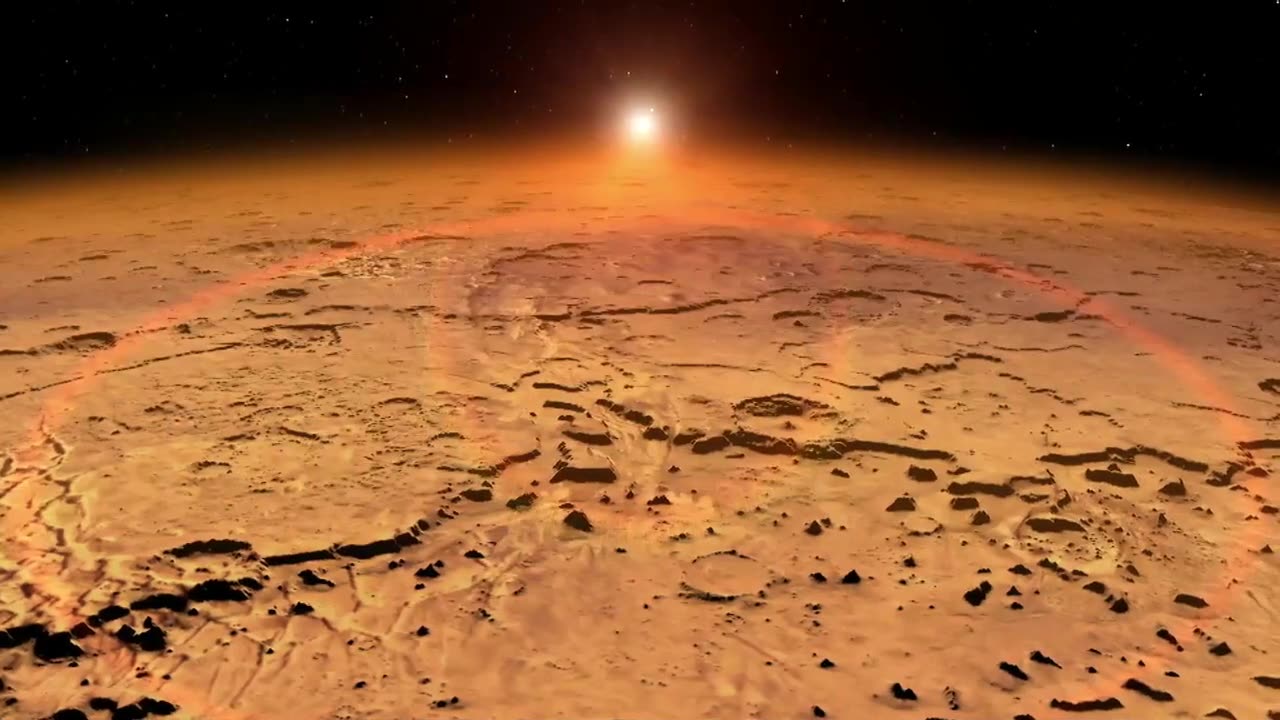Premium Only Content

The planet's surface refers
The planet's surface refers to the outermost layer of a planet, which is the part that is visible and accessible from space. It is where geological formations, such as mountains, valleys, plains, and bodies of water, are found. The surface can vary greatly depending on the planet's composition, geology, and atmospheric conditions. For example, Earth's surface is mostly covered by water bodies, including oceans, while other planets like Mars have dry, rocky surfaces with canyons, mountains, and deserts.I can provide some information on how NASA supports international collaborations in space exploration and shares its findings with the global scientific community.
1. International Space Station (ISS): NASA collaborates with multiple international partners, including Roscosmos (Russia), ESA (European Space Agency), JAXA (Japan), and CSA (Canadian Space Agency), to operate the ISS. The station serves as a platform for scientific research conducted by astronauts from various countries.
2. International Cooperation Agreements: NASA engages in partnerships with space agencies worldwide through formal agreements. These agreements promote collaboration in areas such as astronaut missions, spacecraft development, and scientific research. Examples include the Artemis Accords and NASA's existing international partnership agreements.
3. Data Sharing: NASA promotes the exchange of scientific data and findings with the global scientific community. Researchers from around the world can access NASA's extensive archives of space data, including satellite observations, planetary missions, and astrophysical studies, through various online portals and databases.
4. Collaborative Missions: NASA often collaborates with international partners on major space missions. For instance, the Mars Science Laboratory (Curiosity Rover) mission involved contributions from numerous international researchers and institutions. These collaborations help leverage expertise and resources from multiple countries and increase the scientific output of such missions.
5. Joint Research Projects: NASA supports collaborative research projects involving international scientists and institutions. Through various programs and grants, NASA fosters scientific cooperation to address fundamental scientific questions and advance our understanding of space exploration-related topics.
Overall, NASA actively engages in international collaborations and strives to share its findings and knowledge with the global scientific community. These efforts promote cooperation, enable scientific advancements, and increase our understanding of the universe.
#NASA
2. #Space
3. #Astronomy
4. #SpaceExploration
5. #NASAmissions
6. #Astrophysics
7. #RocketLaunch
8. #HubbleTelescope
9. #Mars
10. #Moon
11. #ISS
12. #PlanetDiscovery
13. #StellarObservation
14. #SpaceScience
15. #NASAHistory
16. #Exoplanets
17. #EarthObservation
18. #SatelliteImagery
19. #Astronauts
20. #SpaceTechnology
21. #SolarSystem
22. #Galaxies
23. #NASAInnovation
24. #SpaceExplorers
25. #Cosmology
26. #Astrobiology
27. #SpaceNews
28. #NASACommunity
29. #Astrochemistry
30. #SpaceMissions
#SciFi
#NASAInspiration
33. #CelestialBodies
34. #NASAImages
35. #SpaceEducation
36. #RocketScience
37. #NASAResearch
38. #Stargazing
39. #AstroPhysics
40. #PlanetaryScience
41. #SpaceX
42. #AstroNerds
43. #NASAUniverse
44. #AstroGeology
45. #SpaceExplorationDay
46. #SpaceFans
47. #NASAInsights
48. #NASAFamily
49. #AstronomyLovers
50. #NASAExpeditions
-
 1:39:31
1:39:31
Space Ice
12 hours agoSpace Ice & Redeye: Battlefield Earth & Rob Schneider
66.3K4 -
 1:33:38
1:33:38
Flyover Conservatives
1 day agoAMANDA GRACE | Prophetic Warnings Ignored: What Happens When Leaders Defy God | FOC Show
58.7K17 -
 59:57
59:57
The StoneZONE with Roger Stone
11 hours agoMEDICAL MURDER: A Sneak Peak into the Making of Died Suddenly 2 | The StoneZONE w/ Roger Stone
49.5K11 -
 1:07:03
1:07:03
Tucker Carlson
10 hours agoMother of Likely Murdered OpenAI Whistleblower Reveals All, Calls for Investigation of Sam Altman
147K174 -
 55:44
55:44
LFA TV
17 hours agoCongress Humiliates Itself | TRUMPET DAILY 1.15.25 7pm
147K39 -
 1:42:04
1:42:04
2 MIKES LIVE
12 hours ago2 MIKES LIVE #167 News Breakdown Wednesday!
92.3K15 -
 2:12:19
2:12:19
Quite Frankly
15 hours ago"Fahrenheit 2025: Drone Hysteria, The Fog, Smart L.A." ft. Elana Freeland 1/15/25
98.7K25 -
 1:43:00
1:43:00
Redacted News
13 hours agoBREAKING! CAPITOL POLICE ON HIGH ALERT OVER ATTEMPTS AGAINST TRUMP, MEDIA SILENT | Redacted
205K437 -
 51:09
51:09
Candace Show Podcast
12 hours agoHILARIOUS! TikTok Ban Backfires | Candace Ep 133
155K229 -
 9:42:20
9:42:20
Dr Disrespect
17 hours ago🔴LIVE - DR DISRESPECT - WARZONE - NO MERCY
150K40